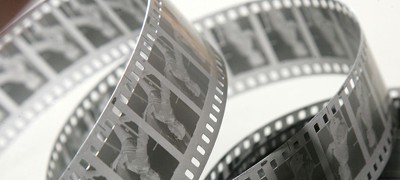Update: the survey is now closed. Thank you to everyone who took part.
Calling all history teachers! The Department for Education has commissioned The National Archives to lead a project exploring the potential of an online repository of film and video, to support primary and secondary school history teachers in delivering the new national curriculum. We need your help with our research by completing a short survey.
In the early 2000s, as a newly-qualified history teacher, I remember planning an elaborate lesson around historical interpretations. It involved using clips from two different film versions of Henry V; the 1944 technicolor extravaganza, starring Laurence Olivier, and the more sombre 1989 release with Kenneth Branagh in the title role. The idea was to compare and contrast how the two films dealt with the famous St Crispin’s Day speech and the subsequent battle scene. After analysing the differences in the tone and approach (from colour, music, composition and direction) we were going to explore why and how the same text could be subject to such wildly different interpretations. It was an ambitious plan, to be sure, but I was confident we’d not only get through it, but that Year 7 would emerge out of period 4 with a newfound appreciation for differing representations of the past.
It was not to be. My off-air recording of the 1945 film looked awful on the ancient portable TV/VHS system that I’d borrowed from the geography department; the picture flickered unbearably, the volume fluctuated unpleasantly and Olivier was reduced to a phantom king. To make matters worse, as I loaded a DVD of the Branagh version and skipped through chapter after chapter to find the appropriate clip, I heard the classroom door open and saw the headteacher walk in. ‘Don’t mind me’, she said. ‘I thought I’d sit in for the remainder of the lesson…’ ‘Of course’, I replied, a little weakly, before hitting ‘play’ on the remote. On the screen, Branagh’s Henry V stood proudly before his men, on the cusp of delivering his most inspirational of pre-battle monologues. Except there was no sound!
Things have come a long way in the last decade and since I was in the classroom. The internet has made a wealth of film and video material available – from historic films to whole broadcast programs. Technology too has developed to make it much easier to use film and video as part of history teaching. During my research for this project, I’ve been astounded by the innovative ways that teachers are embedding moving images into their lesson plans and schemes of work and by the development of students’ understanding of film as an historical source. But I also know, from my discussions with teachers, that there are still many barriers to using clips and programs to support learning in the history classroom.
This survey has been developed to help us better understand both the benefits and challenges of using the moving image in the classroom, as well as to help us think about what a future film/video online platform for history might look like. Your answers will feed into our final report and recommendations to the government.
We need your expertise and experience to:
– explore how moving images are currently used
– understand the challenges involved in using moving images
– identify the type of material that history teachers would like to be made available in the future
– assess the demand for film and video material as part of teachers’ continuing professional development
This short survey will take around five to ten minutes to complete. We really appreciate your time and insight.

[…] A (moving) picture is worth 1,000 words […]